 29.09.2012
Photosynthetic Electron Transport and ATP Synthesis
29.09.2012
Photosynthetic Electron Transport and ATP Synthesis
This animation from Mcgrahill tells you how ATP are synthesised during etc....
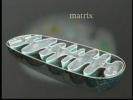 03.09.2012
mitochondria ATP synthesis
03.09.2012
mitochondria ATP synthesis
mitochondria ATP synthesis
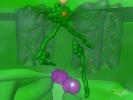 03.09.2012
Photosynthesis (Light Reactions)
03.09.2012
Photosynthesis (Light Reactions)
The NDSU Virtual Cell Animation Project presents 'Photosynthesis - The Light Reactions'. For more information please see http://vcell.ndsu.edu/animations
Photosynthesis is the means by which plants make use of chlorophyll and light to produce energy. This section covers the basic stages of the light reactions in the photosynthetic electron transport chain.
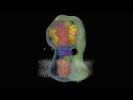 03.09.2012
F1 ATP synthase
03.09.2012
F1 ATP synthase
Credit: Dr. John E. Walker, Medical Research Council, Dunn Human Nutrition Unit, Cambridge, UK.
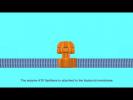 03.09.2012
ATP Synthase Animation
03.09.2012
ATP Synthase Animation
ATP Synthase the Motor of Life by Nasif Nahle
When we talk about the macroscopic world, we define the term structure from an anatomical, histological and morphological viewpoint. However, we often ignore the fact that we have to make a qualitative jump in the progression from macrophysical systems to microphysical systems. When we investigate the system as a whole, we must not limit our knowledge simply to macrophysical parameters which can be measured, as length, distance, volume, etc., but to effective parameters which are further related with electric charges, electromagnetic fields, quantum energy and electrodynamic phenomena. We set in motion a picture of a macrophysical system, i.e. a plant. We can describe its height, its volume, its weight, the quantity of leaves it has, its color, etc.; however, as we move our observations towards smaller and smaller portions of the macroscopic structure, we arrive at a point at which the macrophysical qualities leap into another realm where the parameters with which we previously classified the living organism no longer have any utility. Of course, the transition is so subtle that many of us succumb to the idea that there is no more physical explanation to describe life. If we understand that there is no boundary, but rather a continuum which links every process in every living system with the Universe, we will not be so easily fooled by the illusion of a separation between the macrophysical world and the microphysical world.
 03.09.2012
ATP synthase - the world's tiniest motor
03.09.2012
ATP synthase - the world's tiniest motor
For more details visit: http://creation.com/creation-magazine-live-episode-38
ATP synthase is the world's tiniest motor. Spinning at up to 7000 RPM to manufacture ATP, the energy currency of the cell, it is a key requirement for life and it is powerful evidence against evolution.
Watch an animated video of ATP in action here: http://www.youtube.com/watch?v=W3KxU63gcF4
Main article:
From Creation magazine 31(4) ATP Synthase http://creation.com/atp-synthase
Related articles
• Design in living organisms (motors: ATP synthase) http://creation.com/design-in-living-organisms-motors-atp-synthase
• Fantastic voyage http://creation.com/fantastic-voyage
• DNA repair enzyme http://creation.com/DNA-repair-enzyme
• Notable evolutionists retreating from empiricism to arguments from anology http://creation.com/notable-evolutionists-retreating-from-empiricism-to-arguments-from-analogy
• Can evolution produce new organs or structures? http://creation.com/images/pdfs/tj/j19_2/j19_2_76-82.pdf
For more information on the creation/evolution issue visit http://creation.com
 03.09.2012
The ATP Synthase Enzyme
03.09.2012
The ATP Synthase Enzyme
http://creation.com
This animated sequence shows the ATP Synthase enzyme in operation. The animation is based on an incredible series of scientific discoveries. Only the colours show artistic licence.
ATP, or Adenosine Tri-Phosphate, is the energy currency of the cell. ATP is produced by a tiny molecular rotary motor, rotating at up to 7,000 rpm. These are so small that 100,000 would fit side-by-side in a millimetre. A current of protons drives the motor, unlike man-made electric motors, which use electrons.
This portion of the enzyme is where Adenosine Di-Phosphate is combined with a phosphate ion, in the presence of a catalyst to produce ATP which is then released, making way for the next cycle. A top view of the enzyme shows the sequential operation. Almost every bio-chemical process in your body requires ATP.
Such a nano-machine exhibits all the characteristics of super-intelligent design. ATP is vital for life and many of these motors were needed before the first living cell could exist. An evolutionary impossibility!
http://creation.com
Related Articles:
Design in living organisms (motors: ATP synthase): http://creation.com/design-in-living-organisms-motors-atp-synthase
ATP synthase: majestic molecular machine made by a mastermind: http://creation.com/atp-synthase
Is ATP synthase found in all life?: http://creation.com/atp-synthase-in-all-life
Related Products:
The Creation Answers Book - http://creation.com/store_redirect.php?sku=10-2-505
Creation Magazine subscription - http://creation.com/store_redirect.php?sku=90-3-003
What Darwin Couldn't Know tract - http://creation.com/store_redirect.php?sku=00-1-534
Exploring the World of Biology book - http://creation.com/store_redirect.php?sku=10-1-535
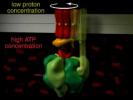 03.09.2012
ATP Synthase
03.09.2012
ATP Synthase
An amazing molecular machine, ATP synthase, can run use electrostatic potential energy stored in a proton gradient to generate ATP. Under different conditions, it can run in the opposite direction, using ATP to build a proton gradient. Created by Graham Johnson of fivth.com and Graham Johnson medical media www.grahamj.com, for Molecular Biology of the Cell, 4e by Alberts, Walter, et al, Gardland Publishers. ©2002
Please visit www.grahamj.com for examples of other molecular machines.
Update:
Glad to hear my APT synthase movie has helped so many people learn an otherwise complicate subject.
I put a lot of time into making this with Peter Walter (UCSF) and Mike Morales (Garland Publisher) back in 2001. http://www.youtube.com/user/garlandscience/featured
A new software project I work on with Ludovic Autin in Art Olson's lab, can make it a lot easier to make a movie like this, and we distribute it for free. Check out: http://epmv.scripps.edu if you want to try it out.
-Graham
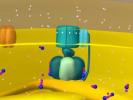 11.08.2012
Gradients (ATP Synthases)
11.08.2012
Gradients (ATP Synthases)
NDSU Virtual Cell Animations Project animation 'Gradients (ATP Synthase)'. For more information please see http://vcell.ndsu.edu/animations
Gradients are used to create energy that can power biological cyles. ATP synthase is powered by a hydrogen gradient, located in the mitochondria. This section covers the action of this specific gradient.

